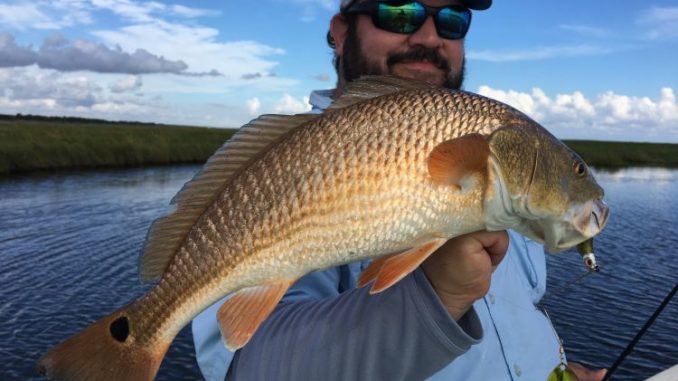
Marsh drains? Yes, but don’t overlook these.
Winter, spring, summer or fall, one of the most effective techniques for catching fish along Louisiana’s coast is to locate marsh drains on falling tides.
Called trenasses by most locals, marsh drains are focal points for activity because they attract game fish that wait to ambush baitfish and shrimp being sucked by the tides from backwater marsh ponds.
Although marsh drains are obvious and many are heavily fished, anglers can identify less-pressured “drains” by finding channels through matted grass. The best are those located at pinch points between two bigger bodies of water, like ponds or small lakes.
Since water moves between the two water bodies with the rising and falling of the tides, it scours slightly deeper channels, and prevents grass from growing in the turbulent water. Bait that hides out in the grass gets funneled through these channels, and fish wait on the other side for the current to bring them food.
The technique paid dividends for Baton Rouge angler Chris Macaluso and me during a recent trip. We were picking up a fish here and a fish there while working grass-lined bayous and flats until we came upon a channel between grass beds. The matted grass was in water no deeper than 2 feet, but the channel was about 3 feet deep, and it opened into a small pond.
We sat there and wailed on speckled trout, redfish and marsh bass, catching them a variety of different ways, including on Chatterbaits, stick baits and Texas-rigged soft-plastics.
We were in a heavily pressured area, but because the grass channel was less obvious than true marsh trenasses, it was likely overlooked by most anglers.
